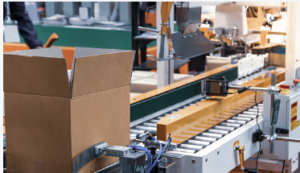A radio frequency reader consists of a scanning antenna and a transceiver communicating via an electromagnetic field. This communication is encoded using a protocol.
 Choosing the right RFID reader for your business depends on your application needs. There are three different types of RFID readers.
Choosing the right RFID reader for your business depends on your application needs. There are three different types of RFID readers.
Choose the one that suits your operations, such as a handheld RFID reader for laundry management or a fixed RFID reader for tracking inventory in a warehouse.
Passive
Passive RFID systems don’t contain any internal power source and are based on electromagnetic energy transmitted by the reader antenna to the tag. The tag’s microchip then reflects that energy to the RFID reader in a process called backscatter, which allows the reader to read the information on the chip. RFID is often deployed to track inventory in retail and supply chain industries, for document control applications, or embedded within various devices as an anti-counterfeiting or security feature. For more information about the RFID readers types, check this out.
Passive tags are much smaller and less expensive than active ones, making them a good choice for many application types. Typical printed passive tags cost only a few cents, while environmentally hardened and secure variants run a few U.S. dollars or more. They can be attached to virtually any surface or embedded in various devices to provide an RFID solution for any industry.
The main disadvantage of passive tags is their short reading range. They must be close to the RFID reader without an onboard battery to power on and transmit a signal. It limits their usefulness in most applications where the physical location of assets must be constantly tracked.
There are three main types of passive RFID tags, each based on its operating frequency. LF (Low Frequency) is the oldest and most common, operating at 13.56MHz. HF (High Frequency) tags operate at a higher frequency of 865 – 960 MHz and are typically used for file tracking, race timing, or laundry management. UHF (Ultra High Frequency) tags have a shorter wavelength, resulting in a much longer read range.
An onboard battery powers active RFID systems and continuously broadcast their signal to be read by RFID readers that can pick up the transmission. It is why they are commonly used as “beacons” in real-time locating systems to track the location of assets continuously. However, the extra parts and energy required for these features add to the overall cost of an active RFID tag. Additionally, their batteries can degrade over time, reducing the lifespan of an active tag. For more information about the RFID readers types, check this out.
Active
Active RFID tags have an integrated battery and an antenna that transmit radio signals to be picked up by the reader. They use the same technology as an intelligent barcode and can store information that can be read, written to or updated at any time. They can be used for high-speed applications like POS or supply chain inventory management and transmit data over long distances. They can also have sensors to monitor temperature, humidity, shock, and vibration. Active RFID tags are more expensive than passive ones but can be used to track high-value assets like machinery or vehicles.
RF waves from the RFID reader charge a coiled antenna in the tag, and power moves from the antenna to the chip. The IC can then decode the incident wave to identify the tag identifier. The signal’s frequency determines the speed and range at which the RFID tag can be detected. If the system uses a lower frequency, it is less sensitive to interference from liquids or metal surfaces, but it may have slower data transfer rates and shorter reading ranges.
The four critical components of an RFID system are the tags, readers, antennae and the information processing system. Choosing the right RFID reader type depends on the application, and you can consult with an experienced label converter to select the best solution for your business.
RFID systems based on Ultra-high frequency (UHF) are typically used for item-level tracking and retail inventory control. These systems operate at higher frequencies than passive RFID systems and have a more extensive read range. They are also more resistant to interference from liquids and metals.